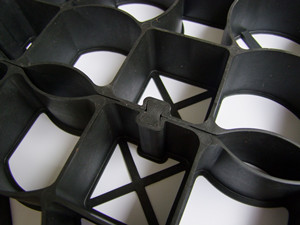Nowadays with all kinds of environmental problem, people has realize that we need to make more efficient use of every resources in the world. And harvesting rainwater is a reasonable option for solving some water related issues in both outdoor and industrial scale. They can be widely used in homes, farms, public construction and buildings such as schools, hospitals, and hotels and many other facilities.
In traditional meaning, rainwater harvesting systems is simply “gathering rain water in a tank”. But today with the addition of a couple of elements just like pressure vessels, pumps and filters, rain harvesting systems are much more efficient. A typical rainwater harvesting system has the few elements as following:
1. Water catch surface: this is the main element where water is caught, the starting point of the rainwater c collection system.
2. Channels: to transport water from catching surface to rainwater harvesting tank.
3. Filters: these are used to filter particles in rainwater.
4. Pumps and pressure vessels: to pressurise water and keep water pressurised.
5. Rainwater harvesting modular: this is the module tank where ready-to-use water is stored.
6. Piping system: to transport rainwater to the points of consumption.
Although rainwater generally contains less minerals because of the air pollutants that may dissolve in rainwater, harvested rainwater should be further treated if it is intended to be used as drinking water.
2. Channels: to transport water from catching surface to rainwater harvesting tank.
3. Filters: these are used to filter particles in rainwater.
4. Pumps and pressure vessels: to pressurise water and keep water pressurised.
5. Rainwater harvesting modular: this is the module tank where ready-to-use water is stored.
6. Piping system: to transport rainwater to the points of consumption.
Although rainwater generally contains less minerals because of the air pollutants that may dissolve in rainwater, harvested rainwater should be further treated if it is intended to be used as drinking water.
How much can you save using rainwater harvesting systems? The answer to this question depends on where you live, i.e. how much rain falls annually, the area of your water catch surface and your water consumption. However, to make a rough estimation, you can save EUR1 for each square meter of your horizontal water catch surface annually. Rainwater harvesting systems are considered to have a high payback and they usually pay for themselves in the first few years. After that, the more rain means the more money you save. Besides that, there will also be a reduction in national costs for water treatment if rainwater harvesting can be widely applying. Thus, it can be concluded that rainwater harvesting contributes to not only individual utility costs but also national treatment costs, which is a cost item for taxpayers.
Rainwater harvesting systems should be installed by an expert plumber. Harvesting systems are designed to occupy minimum space especially in personal garden. For this purpose, underground rain water harvesting module are used. Rainwater harvesting module manufactured from Leiyuan Industrial Company Limited adopts durable plastic materials and have a simple but unique technical structure. These two features result in minimum maintenance requirements for the overall system.
If you are interested in making use of free water, just feel free to contact Leiyuan for rainwater harvesting solutions.




